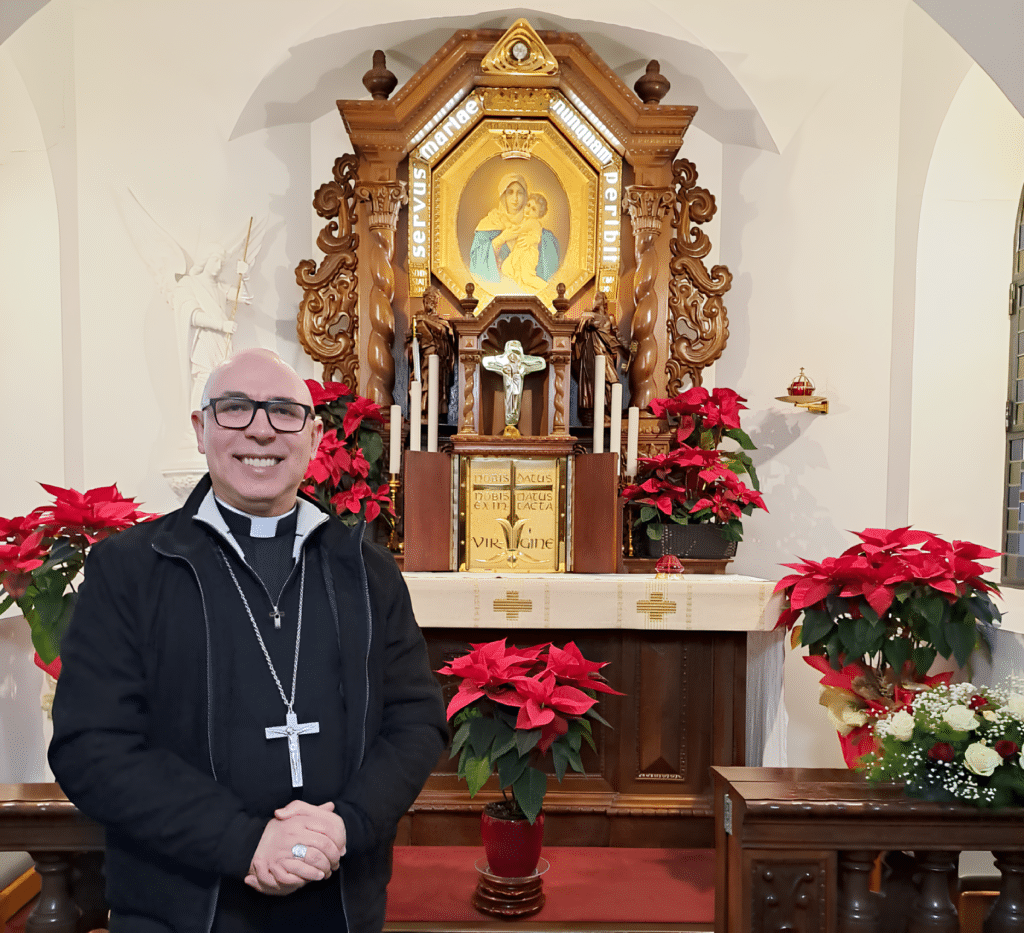This month the Presidency of the National Conference of Bishops of Brazil (NCBB) visited Vatican dicasteries and on January 11th had a meeting with Pope Francis. Following this visit to the Holy Father, the Secretary General of the NCBB, Bishop Ricardo Hoepers, took the opportunity on January 13th to visit the Shrine of Schoenstatt Cor Ecclesiae, located very close to the Vatican, and to have an encounter with the Mother Thrice Admirable.
Bishop Ricardo, currently Auxiliary Bishop of the Archdiocese of Brasilia, capital of the country, is a native of the city of Curitiba. Previously he was bishop of the diocese of Rio Grande, in the southern part of Brazil. These two places established his contact with Schoenstatt, as he tells us in an interview which we transcribe below:
What is your relationship with the Schoenstatt Movement?
It goes back to the minor seminary. At that time, Father Rafael Biernaski, who is now the Bishop of Blumenau, in the state of Santa Catarina and a member of the International Federation of Schoenstatt Priests, was the spiritual director of the seminary and since then, he was preparing us, from praying the rosary to visiting the Shrine. He taught us that through sacrifice, prayer and, above all, consecration to the Blessed Mother, we could persevere in our priestly vocation.
That is why, since I was a child, I went on pilgrimage to the Schoenstatt Shrine from our St. Joseph Seminary in Curitiba, state of Paraná.

What motivates you to go on pilgrimage to the Shrines of Our Lady of Schoenstatt?
What motivates me to go on pilgrimage to the Shrines of the Mother and Queen is also my experience as diocesan bishop of Rio Grande. The Movement of the Mother and Queen is really strong in the homes, in the families. There are so many people in the Diocese of Rio Grande who share the experience of the Mother and Queen visiting their homes, that this has convinced me that the presence of the Virgin of Schoenstatt in the families is the surest way for a diocese, for a particular Church, to evolve and, above all, to be strengthened in the faith. We always had the grace of being well advised by the Sisters of Mary [from the Province] of Santa Maria (Rio Grande do Sul State). In the Diocese of Rio Grande, the Mother and Queen visits practically every family, everywhere.
Is there any aspect of our spirituality that strikes you?
The spirituality of the Movement is very important to me. I am very clear about the importance of the Capital of Grace which, day by day, strengthens not only my vocation, which is now also episcopal, but it is the strength with which we have to face all the difficulties and learn that the sacrifices in our life are opportunities that God gives us to be better people. In living the virtues, graces and charisms, God, through his Mother, shows us that the sure way is to persevere, to always do good.
Through the Capital of Grace, everything that happens is offered to the Blessed Mother and she can distribute throughout the world the graces that people need most. So, I always feel like a collaborator. Wherever we are, we can always collaborate with the Capital of Grace and with the Schoenstatt spirituality, which shows us, above all, the virtue of searching within ourselves, recognizing our mistakes and sins, and improving ourselves, polishing our souls, consecrating ourselves to Mary and becoming sons and daughters in the Son, through the Blessed Mother.

As secretary of the NCBB, what message do you think is important for all the members of the Schoenstatt Movement?
As secretary of the NCBB, I also had the joy of being at the Schoenstatt Shrine in Brasilia several times. It is a beautiful and wonderful place. I hope that everyone who comes in contact with the Blessed Mother can be strengthened in body and soul and can consecrate their lives and families for love of the Kingdom of God.
Let us pray for Bishop Ricardo and for his great mission in the Church!
Source: Schoenstatt Brazil, schoenstatt.org.br
Translation: Maribel Acaron
